HistoricalSites, Cyprus

Removed from Unnamed collection
Limassol City Center 
Limassol's historical centre is located around its medieval Limassol Castle and the Old Port. Today the city spreads along the Mediterranean coast and has extended much farther than the castle and port, with its suburbs stretching along the coast to Amathus. http://www.limassoltourism.com/en/things-to-do/local-experience/nightlife/1-limassol-city-center
Map

Removed from Unnamed collection
The Limassol Castle 
The Limassol Castle is situated in the centre of old Limassol, is a remnant from the presence of Crusaders on the island. It was built in the 13th century on the site of an earlier Byzantine castle and has been converted today into the Cyprus Medieval Museum. http://www.limassoltourism.com/en/things-to-do/local-experience/nightlife/2-limassol-castle
Map

Removed from Unnamed collection
Archaeological Park of Kato Pafos 
The Archaeological Park of Kato Pafos (Paphos) is one of the most important archaeological sites of Cyprus and has been included in the UNESCO World Heritage Sites list since 1980.
Nicocles, the last King of Palaipafos moved the city from the previous location to its present location near the harbour at the end of the 4th century BC. Between the 2nd century BC and 4th century AD, Pafos was the capital city of Cyprus.
The Park includes sites and monuments from the 4th century BC to the Middle Ages, while most remains date to the Roman period. The intricate mosaic floors of four Roman villas (the houses of Dionysos, Theseus, Aion and Orpheus) form the impressive epicentre of the finds, and depict various scenes from Greek Mythology. The complex also includes other important monuments, such as the Asklepieion, the Odeon, the Agora, the Saranta Kolones (Forty Columns) Castle, the Limeniotissa ruins of an Early Christian Basilica, and the Tombs of the Kings. http://www.visitcyprus.com/index.php/en/discovercyprus/culture-religion/sites-monuments/item/239-archaeological-park-of-kato-pafos-paphos
Map

Removed from Unnamed collection
Tombs of the Kings 
The famous ‘Tombs of the Kings’ form part of the Archaeological Park of Kato Pafos (Paphos) - one of the most important archaeological sites of Cyprus that has been included in the UNESCO World Heritage Sites list since 1980. The monumental underground tombs are carved out of solid rock and date back to the Hellenistic and Roman periods.
Rather than kings, it is actually high ranking officials and aristocracy that were buried here, but the size and splendour of the tombs – some decorated with Doric pillars - gave the locality its grand name.
Some of the tombs imitate the houses of the living, with the burial chambers opening onto a peristyle atrium. They are similar to tombs found in Alexandria, demonstrating the close relations between the two cities during the Hellenistic period. http://www.visitcyprus.com/index.php/en/discovercyprus/culture-religion/sites-monuments/item/253-tombs-of-the-kings
Map
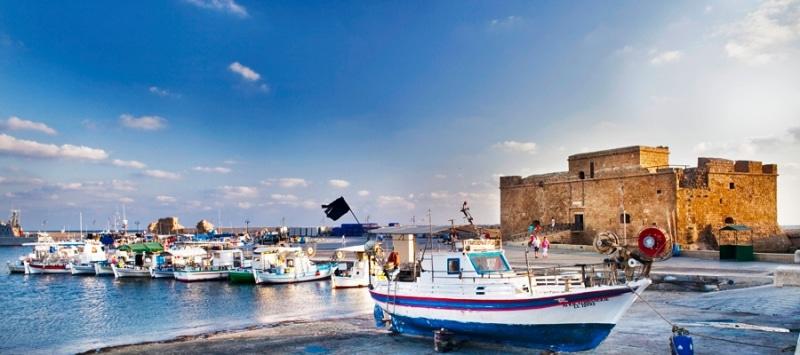
Removed from Unnamed collection
Paphos Castle 
Standing grandly at the west end of the town’s harbour, Pafos (Paphos) Castle (Medieval Fort) was originally a Byzantine fort built to protect the harbour, and was rebuilt by the Lusignans in the 13th century, but then dismantled by the Venetians. The Ottomans rebuilt it in the 16th century when they conquered the island. What survives today is the 1592 Ottoman restoration of the western Frankish tower with its Venetian additions. An inscription above the only entrance of the castle bears witness to this restoration.
The main part of the castle is a big square tower that has an enclosed courtyard in the middle. The ground floor consists of a central hall with small rooms on each of its two long sides, which were used as prison cells during Ottoman Rule. There are 12 battlements on the roof, which received a corresponding number of cannons. The Ottomans removed the cannons in 1878, when they handed over the administration of the island to the British, who used the castle as a salt store until 1935, when it was declared an Ancient Monument under the Antiquities Law. http://www.visitcyprus.com/index.php/en/discovercyprus/culture-religion/sites-monuments/item/245-pafos-paphos-castle
Map
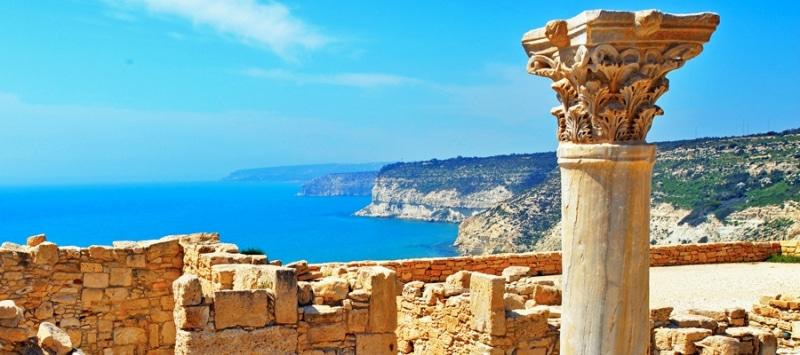
Removed from Unnamed collection
Kourion Archaeological Site 
The archaeological remains of Kourion - which was one of the island’s most important city-kingdoms in antiquity - are of the most impressive on the island, and excavations have unearthed many significant finds, which can be viewed at the site. http://www.visitcyprus.com/index.php/en/discovercyprus/rural/sites-monuments/item/2402-kourion-archaeological-site
Map
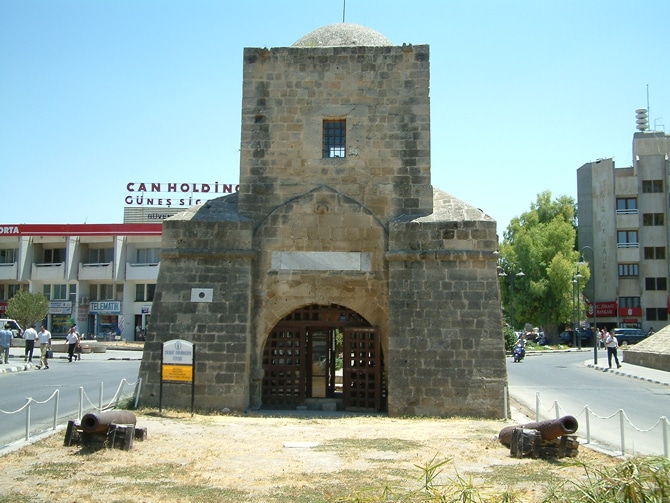
Removed from Unnamed collection
Kyrenia Gate 
The Kyrenia Gate in the North Cyprus is one of the three gates on the walls surrounding the old city of Nicosia. This gate was one of the most important entry-exit points of the city. It is also known as the "Del Providetore Gate" after the architecture Proveditore Francesco Barbaro. http://www.northcyprusonline.com/North-Cyprus-Online-Sightseeing-Nicosia-Kyrenia-Gate.php
Map
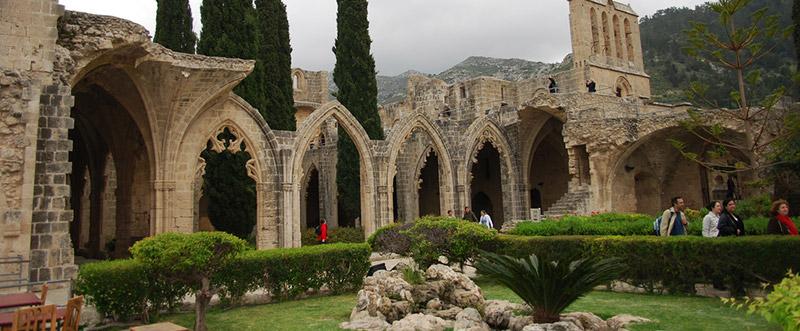
Removed from Unnamed collection
Bellapais Abbey 
Bellapais Abbey is located in the hillside, 6 miles South East of Kyrenia. The Abbey is the best example of Gothic architecture in Cyprus, as well as being ones of the finest in the Middle East. Built by the Lusignans, the first settlers in Bellapais Abbey were the Agustinas Monks, who escaped from Jerusalem in late Twelth century. http://www.kyreniacastle.com/kyrenia.php
Map
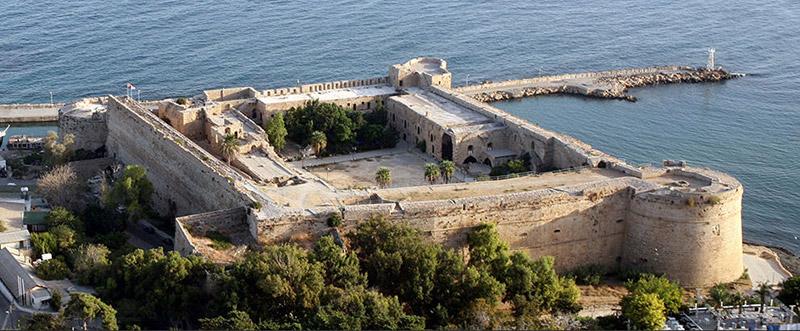
Removed from Unnamed collection
Kyrenia Castle 
Kyrenia Castle is located near the harbour, which is horse shoe shaped. It was originally built by the Romans in the Third century to defend the city, which was located up on the hillside. In the Tenth century, the Byzantines then further enhanced the shape of the castle in order to protect the people of the city from Arab pirates. http://www.kyreniacastle.com/kyrenia.php
Map

Removed from Unnamed collection
Hala Sultan Tekke Mosque 
This historic mosque is located 3km west of Larnaka on the road to Kiti, on the main Salt Lake. After the Arab armies successfully landed in Larnaka in 648AD, the Holy Helper and aunt of Mohamed - Umm Haram - died at the site when she fell off her mule. http://larnakaregion.com/directory/product/hala-sultan-tekke-mosque
Map

